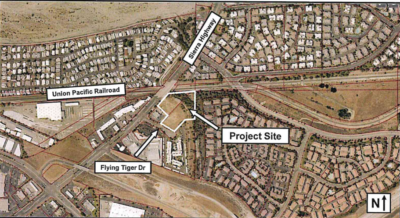Dental implant restorations are a long-lasting solution that look and feel just like natural teeth. Getting them requires surgery, but not everyone is ready for the procedure right away. Some people need a little extra prep work to make sure their implants have the best chance of success, whether they’re getting fixed full arch implants or implant dentures. Let’s take a look at some common procedures and how they work.
Sinus lift
A sinus lift is a surgical procedure that adds bone to the molar and premolar area of the upper jaw in preparation for upper denture implants or other upper jaw dental implants. Sinus lifts are great for patients with bone loss in the rear portion of their upper jaw or those whose sinuses are too close to the jawbone.
How it works:
Your dentist will use X-rays and CT scans to determine if you need a sinus lift. Based on the assessment, you’ll get a treatment plan customized to your specific needs. Your surgeon will administer pain management to keep you comfortable throughout the procedure. During the procedure, the surgeon lifts the sinus membrane and places the bone graft material. The bone graft fuses with your natural bone, which can enable your upper jaw to support dental implants.
Bone grafts
When you lose a tooth, your jawbone loses stimulation and becomes weaker. It is difficult to place implants securely in a weakened jawbone, but with the right treatment, it’s possible. Estimates suggest that around 50% of all dental implant procedures require dental bone grafts.1 This procedure rebuilds and strengthens the jawbone so that it can support an implant for many years.
How it works:
As with sinus lifts, your dental provider uses oral exams, X-rays, and CT scans to evaluate your bone health and structure. They’ll recommend a treatment plan with instructions on how to prepare for the surgical treatment. Patients will get pain management before the treatment. Once it takes effect, your surgeon places the bone graft material (either synthetic or from a donor) in areas of your jaw where bone density is low. Over time, the graft fuses with the natural bone, making it stronger and thicker. When the healing and integration are done, you’re ready for your dental implant.
Source:
1 Molecules via PubMed Central – Bone Grafts and Substitutes in Dentistry: A Review of Current Trends and Developments
Gum disease treatment
More than 42% of adults ages 30 and older have gum disease, according to the National Institutes of Health.2 Gum disease is a common cause of tooth loss, and if left untreated, it can also affect the bone and tissues that support natural teeth and implants. Treating gum disease protects healthy natural teeth and helps dental implants heal and integrate as they should.
How it works:
Your dentist usually recommends a treatment plan based on the extent of the problem.
- Laser surgery: This type of surgery reduces bacteria and inflammation to help heal your gums.
- Scaling and root planing: Think of this as a deep cleaning that gets rid of plaque and tartar below the gum line. Scaling and root planing can stop infection and help your gums reattach to your teeth.
- Surgical gum procedures: Gum grafting or pocket reduction surgery may be needed before a patient gets implant treatment in more advanced cases.
Source:
2 NIH: MedlinePlus Magazine – Gum disease: By the numbers
Tooth extractions
Some patients need implants to replace a tooth that’s too damaged to repair but hasn’t fallen out. Your dentist may suggest an extraction followed by an implant if one or more teeth are severely decayed, cracked, or loose due to gum disease. How long you have to wait after a tooth extraction depends on a few factors, like how complex the extraction is. Some people can get a dental implant the same day their tooth is removed, while others might need to wait a couple of months to let their gums and bone heal first. Your dentist will figure out what’s best for you.
How it works:
Your dentist normally conducts an oral exam to check the condition of your teeth and gums. They may get X-rays and scans to check your jawbone health. Once your treatment plan is ready, they’ll schedule the extraction and let you know how to prepare. During the procedure, the dentist carefully removes the damaged tooth while preserving as much bone as possible. If immediate implant placement isn’t possible, your dentist may suggest wearing a flipper (temporary artificial tooth) while you heal.
If you’re considering dental implants in Florence but aren’t sure if you need pre-implant procedures, a dental implant specialist can assess your oral health and recommend the best course of action.






